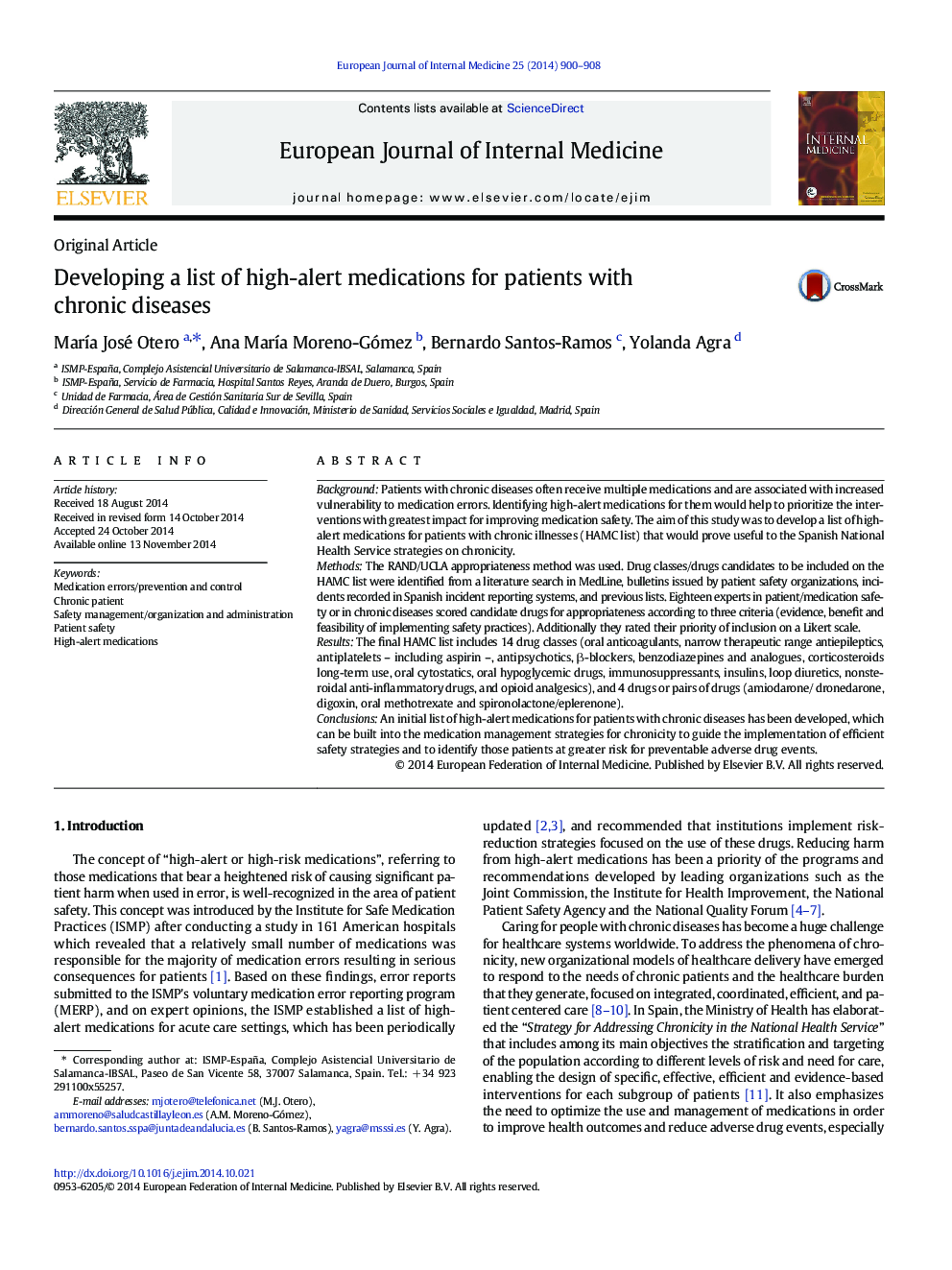| Article ID | Journal | Published Year | Pages | File Type |
|---|---|---|---|---|
| 3466396 | European Journal of Internal Medicine | 2014 | 9 Pages |
•Targeting high-alert medications is a core principle for medication safety.•A specific list of high-alert medications for chronic patients has been developed.•The list includes 14 drug classes and 4 drugs associated with severe adverse events.•Focus on these drugs to prioritize safety strategies for chronic patients.•Use the list to identify patients at a greater risk of preventable adverse drug events.
BackgroundPatients with chronic diseases often receive multiple medications and are associated with increased vulnerability to medication errors. Identifying high-alert medications for them would help to prioritize the interventions with greatest impact for improving medication safety. The aim of this study was to develop a list of high-alert medications for patients with chronic illnesses (HAMC list) that would prove useful to the Spanish National Health Service strategies on chronicity.MethodsThe RAND/UCLA appropriateness method was used. Drug classes/drugs candidates to be included on the HAMC list were identified from a literature search in MedLine, bulletins issued by patient safety organizations, incidents recorded in Spanish incident reporting systems, and previous lists. Eighteen experts in patient/medication safety or in chronic diseases scored candidate drugs for appropriateness according to three criteria (evidence, benefit and feasibility of implementing safety practices). Additionally they rated their priority of inclusion on a Likert scale.ResultsThe final HAMC list includes 14 drug classes (oral anticoagulants, narrow therapeutic range antiepileptics, antiplatelets – including aspirin –, antipsychotics, β-blockers, benzodiazepines and analogues, corticosteroids long-term use, oral cytostatics, oral hypoglycemic drugs, immunosuppressants, insulins, loop diuretics, nonsteroidal anti-inflammatory drugs, and opioid analgesics), and 4 drugs or pairs of drugs (amiodarone/ dronedarone, digoxin, oral methotrexate and spironolactone/eplerenone).ConclusionsAn initial list of high-alert medications for patients with chronic diseases has been developed, which can be built into the medication management strategies for chronicity to guide the implementation of efficient safety strategies and to identify those patients at greater risk for preventable adverse drug events.
